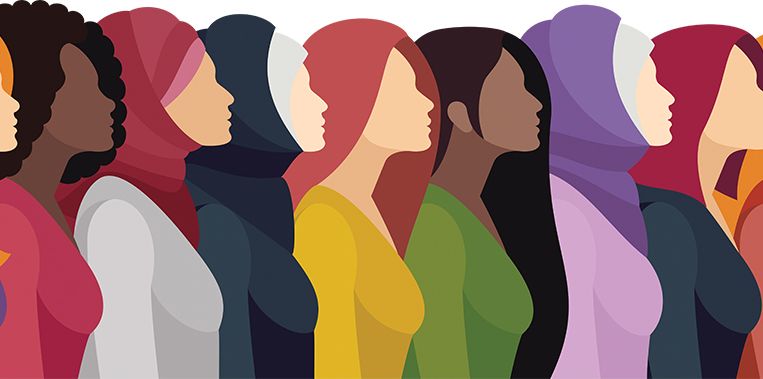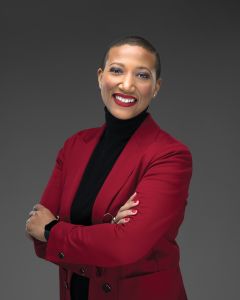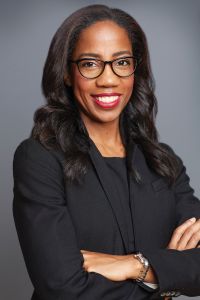Diversifying Architecture’s Ranks: First, the Time It Takes to Train
The architecture field remains overwhelmingly white, but people of color — particularly Black women — are making more inroads than ever
By Aaron Short August 5, 2024 9:00 am
reprints
When the American Institute of Architects elected Kimberly Dowdell to be its president two years ago, the first Black woman to lead the group in its 165-year history, many architects hoped the industry would finally embrace changes leading to greater inclusivity.
At her inauguration last December, Dowdell pledged to elevate and support young architects working with civic leaders to improve society while advancing their careers.
“I see a future where the population of architects more proportionately reflects the communities that we serve … where our ZIP codes do not determine our life expectancy … and where everyday people have a better understanding of what architects do to build a better world,” she said at the trade association’s board meeting in Washington, D.C.
The profession has long struggled to diversify its ranks.
Only 2 percent of architects nationwide are Black, while another 7 percent identify as Asian, and 6 percent are Latino, according to a 2024 report from the National Council of Architectural Registration Boards. As few as 2,500 architects in the country identify as Black, according to the National Organization of Minority Architects (NOMA), which maintains an online directory of licensed practitioners.

The vast majority of architects, or 62 percent, are white men, while one in five are white women, the report found. And those numbers have changed only slightly since 2019, when 16 percent of architects identified as a person of color while 85 percent said they were white, the NCARB report said.
The reasons behind the lack of diversity are longstanding and complex. It often takes more than 13 years to complete one’s schooling and get an architect’s license, putting the field on par with medical training. Education costs and the pressures that come with raising a family, combined with low starting salaries, can dissuade people at every stage of their career. Once an architect of color finally joins a firm, the lack of opportunities to work with clients and obstacles to advancement can prove immensely frustrating.
But there’s been some progress. One out of three new architects identifies as a person of color, and two out of five are women. And nearly half, or 47 percent, of the prospective architects who have completed their schooling but are in the process of taking their licensing exams identify as people of color while 46 percent of licensure candidates are women, NCARB said.
“Our profession has always been a long game regardless of your background and where you come from, but we’ve put a lot of attention on increasing diversity in the profession,” said Allison Lane, president of the New York Chapter of NOMA. “It really starts from a younger age. There still will be some time before we see an increased amount of Black and minority architects in the profession.”
Getting more young people into the field will make architecture more diverse over the long term, but the pipeline to join the profession is broken, some architects say.
The high cost of college and graduate school tuition, professional liability insurance, and the lengthy period of time it takes to get a license can be high barriers for anyone to overcome without independent financial support.
“When you come from a historically underrepresented background, you have huge college debt, no support in school and beyond; and, when you get out of school to get a license, you need entrepreneurial backing,” one architect said.
Conversations about diversity initiatives in the industry grew in the aftermath of George Floyd’s murder in 2020. Large firms started diversity, equity and inclusion committees to recruit and retain more people of color at junior levels and expand their mentorship programs for high school and college students.
This year, more than 30 New York-area firms participated in a program that hosted ninth and 12th graders for office visits over two semesters. Some even worked with architects and engineers to design buildings that will eventually get built.
“It’s a really phenomenal way to introduce young people to the profession,” Latoya Kamdang, director of operations at Ennead Architects, said. “We had students in the software. They’re already so tech savvy, and getting that exposure very early can help them develop a portfolio as well.”
Officials at NCARB, which facilitates the credentialing of architects, also made a significant move last spring to remove the rolling clock, a policy which required architect candidates to finish six exams within a five-year window of starting their first one — or face retaking them all over again. The strict testing period disproportionately affected women and people of color, and the decision brought thousands of candidates closer to their goal of obtaining a license.

But industry leaders acknowledged that students needed more scholarship opportunities and stronger retention programs in order to keep people on their career paths. And, once they’re hired, young architects can get pigeonholed into smaller roles, making it difficult to jump from mid-career positions to senior management.
“It goes back to the diversity of legacy firms,” Kamdang said. “Can they get people to grow into roles in leadership and design and be client facing? The number of people who get to that level of 2 percent is probably very low.”
Clients also have to be willing to hire architects of color and adjust their contract requirements to accommodate a broader array of firms.
That’s been an issue for public sector agencies whose requests for proposals have specific preferences that would eliminate firms that don’t have the work experience to match them. Architecture associations have been challenging city and state agencies to create more opportunities that are accessible to smaller minority- and women-owned business enterprises (MWBEs).
“When you look at requirements for small firms, a lot of firms are boutique or sole proprietorship, so they don’t even necessarily qualify,” NOMA’s Lane said. “We’re working to make those qualifications more equitable, allow more opportunities for joint ventures between our firms, and have access beyond the MWBE requirements.”
The benefits of having a diverse staff can significantly enhance the design of a project.
Blima Ehrentreu, CEO of The Designers Group, credits her team, more than half of whom are people of color, with designing a Bronx urgent care center to resemble a spa to make its patients more comfortable seeking health care.
“Why is it when you go to a spa it’s a luxury experience, but when you’re getting stitches no one looks forward to it?” she said. “At our grand opening, one city official said, ‘Hey, is this a spa?’ And I said, ‘Did someone pay you to say this?’ People walk in and don’t get nervous, and feel that they’re getting quality care for the services they need right now.”
It’s also important for clients in communities of color to have their needs be heard. Lane, who also leads engineering and design giant AECOM’s multifamily studio division, said her designers adjusted the renovations of public housing rooms to ensure that families had proper-size stoves and refrigerators, cabinets that stretched to the ceiling, and heating and cooling units that could be adjusted within the room based on tenant feedback they received.
“If you’re designing from an ivory tower and not on the ground without a depth of understanding of the experiences that certain communities have, which is reflected in the background of designers, there’s a real chance your project will fall short,” she said. “There’s so much opportunity out there in the public sector for work, and these agencies and organizations really need more diverse architects on the ground helping work through these problems.”


